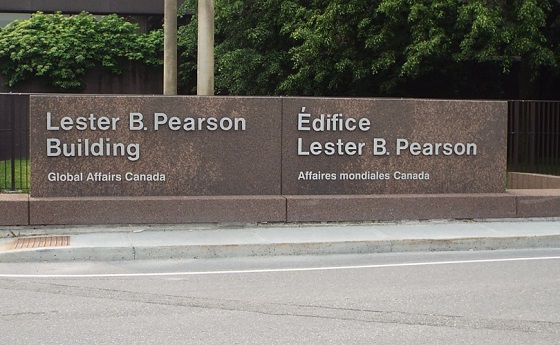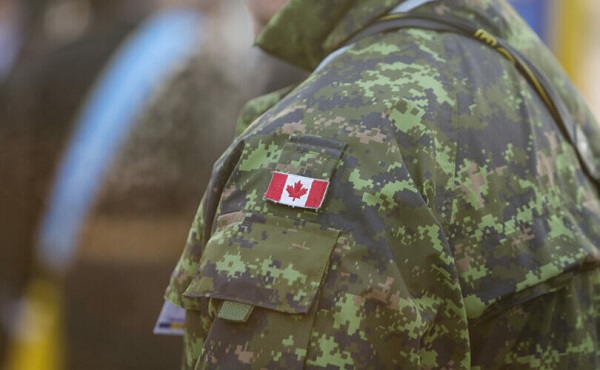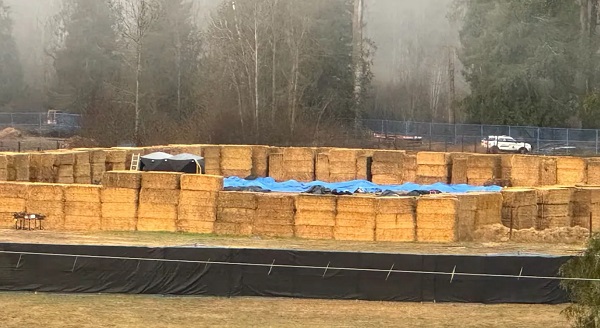A day of historic impeachment, a Capitol as armed encampment
WASHINGTON — The scene in the U.S. Capitol seemed jarringly disconnected. Inside the House chamber, the nation’s lawmakers spoke with solemnity about democracy, the rule of law and the words of Abraham Lincoln as they undertook a vote to remove the president from office.
They wore masks, a rule imposed by Democrats, as a measure of the pandemic that continues to ravage the country.
But only steps away, outside the chamber doors, there was the look of an armed encampment.
The House impeachment of President Donald Trump for inciting an insurrection on the home of the branch of government created in Article I of the Constitution contained arresting reminders of the violence and death wrought just a week ago and the fears that the Capitol needed enhanced protection to prevent it from happening again.
Where visitors once walked, hundreds of National Guard members camped out, protecting lawmakers still reeling from last week’s violence and preparing for the inauguration of President-elect Joe Biden.
The Capitol grounds were wrapped in seven-foot fences, and scores of other law enforcement officers and troops kept a watchful eye.
A replica of the dome that stands atop the Capitol, the Statue of Freedom, resides in the Capitol’s visitor centre. Beneath it, soldiers slept on marble floors while others huddled to discuss their marching orders for the day.
They massed together from one end of the giant hall to the other and their numbers made it impossible to follow the signs calling for social distancing. To protect from COVID, they wore masks, and to protect from potential violence, they stockpiled riot shields and gas masks.
Republican Rep. Brian Mast of Florida, a military veteran who lost both legs in the war in Afghanistan, was shocked at the sight and that so many soldiers were deemed necessary to keep the Capitol safe.
“It’s as sad as anything can make me in this world,” Mast said as he gave some of them a tour.
The Capitol always sees stepped-up security precautions leading up to an inauguration, but it rarely looks like the nation is on a war footing.
But along with the signs of fear, there were also signs of gratefulness for those protecting the Capitol. A tunnel leading to House office buildings has become a makeshift tribute to members of law enforcement who protected the Capitol when a violent mob overran the building in an attempt to derail the certification of Electoral College votes in the presidential election. More than 50 police officers were injured in the attack, including 15 who were hospitalized. One was killed.
“Thank you for keeping my mommy safe,” said a poster with smiley faces and stars and signed by “Clair Age 8.”
The thank you signs poured in from all ranks and political parties, including a letter from the office of Senate Majority Leader Mitch McConnell, R-Ky. “We would not be here without you,” said another poster signed “thank you from AOC,” the initials for Rep. Alexandria Ocasio-Cortez, D.-N.Y.
Outside of the Capitol, members of the National Guard — many carrying semi-automatic assault rifles — are supplementing the work of the U.S. Capitol Police, forming perimeters around each of the office buildings that lawmakers and their staffs use when not in the Capitol for votes. The number of entrances into the buildings has been dramatically diminished and those approaching must present a credential to get in.
The tensions were also apparent inside the House chamber. Beginning Tuesday, lawmakers had to walk through a metal detector before being allowed to enter the chamber. Members of Congress have previously enjoyed nearly free range at the Capitol, able to bypass security screening stations at most entrances to the building. In the House chamber, there have been Capitol Police officers and civilian door monitors but no screening stations. Reporters had to do the same to enter the galleries above the chamber.
As the debate over whether to impeach Trump ensued in the afternoon on the House floor, one side called for unity, the other accountability. It’s very much unclear whether either will happen.
“This is a moment of truth my friends,” said Rep. Gerry Connolly, D-Va. “Are you on the side of chaos and the mob, or on the side of constitutional democracy and our freedom?”
“If we impeached every politician who gave a fiery speech to a crowd of partisans, this Capitol would be deserted. That’s what the president did, that is all he did,” said Rep. Tom McClintock, R-Calif.
No. 3 House Republican Liz Cheney of Wyoming, who created a tempest inside the party by declaring she would support impeachment, quickly left after casting her “aye” vote. But another GOP impeachment backer, John Katko of New York, lingered for a bit near a desk with a terminal that keeps a tally.
House Speaker Nancy Pelosi gaveled the vote and announced the tally — but only after waiting for California Democratic ally Maxine Waters, a strong opponent of Trump, to cast the 232nd and final vote to impeach him.
As Pelosi announced the vote count, there was hardly a sound, a single clap from one or two in the audience that was quickly replaced by silence as most members headed for the exits.
By Kevin Freking And Andrew Taylor, The Associated Press
Alberta
School defunding petition in Alberta is a warning to parents

This article supplied by Troy Media.
A union-backed petition to defund independent schools in Alberta could trigger a wave of education rollbacks across Canada
A push to defund independent schools in Alberta is a warning to every Canadian parent who values educational options.
A petition backed by the Alberta teachers’ union may be the first step toward reduced learning choices across Canada. Independent schools, most of them non-elite and often focused on a specific pedagogical approach, receive partial public funding in Alberta and serve diverse student populations.
The petition, launched under Alberta’s citizen initiative law, could trigger a provincewide referendum if it meets the required threshold set by provincial election law.
If your child isn’t in a standard public classroom, whether they’re home-schooled, in a charter, Francophone, Catholic, or
specialized public program, this petition puts your educational decisions at risk.
Opponents of choices in education have been forthright in their attempts to erode the large and successful range of learning options that most Canadians enjoy. Instead, they seem to be aiming for a single, uniform, one-size-fits-all system with no variation for children’s many learning styles and needs, nor for new teaching innovations.
During last year’s NDP leadership campaign in Alberta, candidate (and current MLA) Sarah Hoffman proposed effectively eliminating charter schools and forcing them to join public school boards.
The current recall effort targeting Alberta Education Minister Demetrios Nicolaides lists “charter-private school” funding as a rationale. There is no such thing as a charter-private school, since charter schools are public and 100 per cent provincially funded.
It’s clear the petition is aimed at restricting or defunding charter schools despite their popularity. More than 15,000 students are enrolled and over 20,000 more are on wait-lists in Alberta.
Alberta isn’t the only place where schooling options are coming under pressure. Yukon’s NDP leader has called for defunding and eliminating the territory’s entire Catholic separate system. Similar arguments exist in Ontario. British Columbia doesn’t have a Catholic school system. Newfoundland had one, but in 1998 merged the Catholic board into the public one.
Going as far back as 2010, provinces including Newfoundland, British Columbia, P.E.I. and Nova Scotia have sought to justify limiting the Francophone schooling options they offer due to high costs and budget limitations.
These provincial actions raise a larger question. Efforts to defund Catholic and Francophone schooling are striking, given that both are constitutionally protected. If, as teachers’ unions argue, even constitutionally protected choices can be defunded, restricted or eliminated, how safe are all the other options, like independent, charter, or microschools that aren’t written into the constitution but excel at producing well-formed, knowledgeable graduates ready for adulthood?
Even specialized programs offered within the public system aren’t safe. Last year, the Calgary Board of Education shut down its all-boys program, saying the space was needed to accommodate general enrolment growth. However, the building was then leased out to a post-secondary institution. In Vancouver, the public board stopped new enrolment in its gifted student program, ending “the only publicly funded option for kids who need an accelerated learning environment.”
If these formal attacks on educational diversity can happen in Alberta, which has long been Canada’s leader in making a wide variety of learning options available, affordable and accessible to families, then it certainly can happen in other provinces as well.
The Saskatchewan Teachers’ Federation has already asked the government to end funding for independent schools. A similar push has surfaced in British Columbia. The claim that independent schools drain resources from the public system is incorrect. Every student who enrolls in an independent school costs the provincial budget less and frees up space, teaching time, and other public school resources for everyone else.
These efforts reflect a zero-sum view of education and a false view that only some schools serve the common good.
A better approach is to expand what’s available. Provinces can support more learning options for families, which means more resources and better results for students, no matter how or where they learn.
We need to pay attention to what’s happening in Alberta and elsewhere. Parents don’t want fewer options to help their children enjoy school and flourish academically or personally. If educational diversity can be rolled back in Alberta, it can be rolled back anywhere.
Canadians who value educational alternatives need to pay attention now—before the decisions are made for them.
Catharine Kavanagh is western stakeholder director at Cardus, a non-partisan thinktank that researches education, work and public life.
Troy Media empowers Canadian community news outlets by providing independent, insightful analysis and commentary. Our mission is to support local media in helping Canadians stay informed and engaged by delivering reliable content that strengthens community connections and deepens understanding across the country
Business
Liberals refuse to disclose the amount of taxpayer dollars headed to LGBT projects in foreign countries

From LifeSiteNews
The Liberal government of Prime Minister Mark Carney will not openly disclose how much money from its foreign-aid budget is going toward overseas “gender identity” and “decolonization” projects.
According to the government, there are “concerns” that disclosing the amount of funds could endanger certain LGBT organizations that get money from it.
On November 3, Global Affairs Canada, in response to a question on the order paper from a Conservative MP, said that the funding amounts could not be made public due to claimed “security concerns” and “confidentiality requirements.”
“These are the most common reasons projects are considered sensitive: the organization or individuals might be in danger if it becomes known that they are receiving funds from a foreign government; (or) implementing a project related to sensitive topics such as two-spirit, lesbian, gay, bisexual, transgender, queer, intersex and additional sexually and gender-diverse people rights, human trafficking, early/forced marriage, (and) human rights defenders,” Global Affairs noted.
Continuing, Global Affairs said that there is a possible “danger” to partner organizations that could be “forced to close” or even “arrested” due to “harassment from the local population or government.”
As reported by LifeSiteNews, Carney’s budget will include millions in taxpayer money for “SLGBTQI+ communities,” gender equality, and “pride” safety.
Canada’s 2025 federal budget is allotting some $54.6 million to LGBT groups in a move criticized by Campaign Life Coalition as prioritizing activist agendas over struggling families’ basic needs.
Canadian taxpayers are already dealing with high inflation and high taxes due in part to the Liberal government overspending and excessive money printing, and even admitting that giving money to Ukraine comes at the “taxpayers’” expense.
As recently reported by LifeSiteNews, Bank of Canada Governor Tiff Macklem gave a grim assessment of the state of the economy, essentially telling Canadians that they should accept a “lower” standard of living.
-

 Health2 days ago
Health2 days agoRFK Jr’s argument for studying efficacy of various vaccines
-

 Daily Caller2 days ago
Daily Caller2 days agoTrump Reportedly Planning Ground Troops, Drone Strikes On Cartels In Mexico
-

 armed forces17 hours ago
armed forces17 hours agoIt’s time for Canada to remember, the heroes of Kapyong
-

 International2 days ago
International2 days agoBBC uses ‘neutrality’ excuse to rebuke newscaster who objected to gender ideology
-

 Agriculture2 days ago
Agriculture2 days agoThe Canadian Food Inspection Agency’s Bloodlust: Worshipping Policies While Ignoring Science
-

 armed forces2 days ago
armed forces2 days agoWhy Do Some Armed Forces Suffer More Suicides Than Others?
-

 Agriculture2 days ago
Agriculture2 days agoThe Canadian Food Inspection Agency’s Bloodlust for Ostriches: Part 2
-

 Agriculture2 days ago
Agriculture2 days agoWas The Ostrich “Cull” A Criminal Act?








